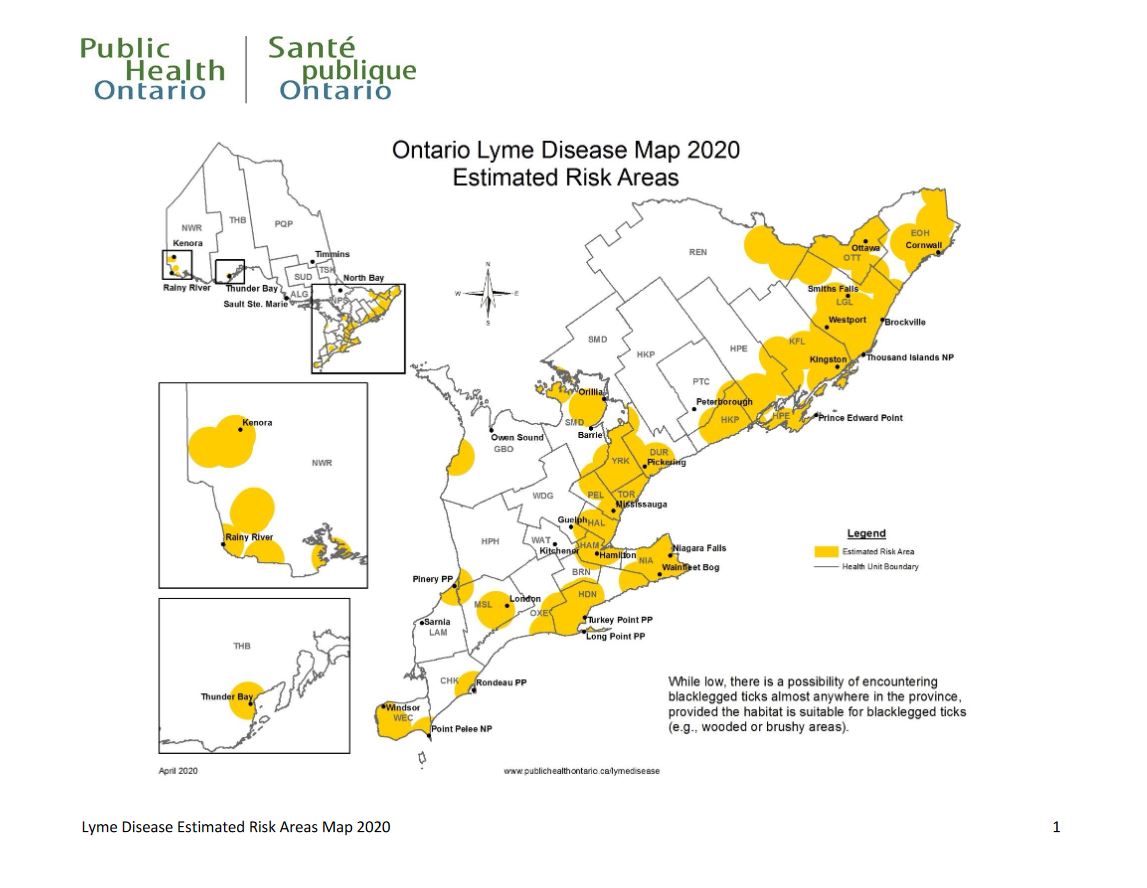The Middlesex-London Health Unit says a massive yearly increase in the presence of blacklegged ticks resulted in a large portion of the region being added to the province’s Lyme disease risk area map.

According to the health unit, the number of blacklegged ticks, also known as deer ticks, observed in the region has ballooned nearly eightfold in three years from 12 in 2018 to 95 in 2020. The number is based on blacklegged ticks submitted to the health unit and those found by “dragging,” which is a surveillance measure involving “dragging a white flannel cloth over and around vegetation where ticks may be present.”
In 2019, the region covered by the MLHU was not listed as a hot spot on Public Health Ontario’s annual Lyme disease estimated risk areas map, but a yellow circle now covers much of the region on the province’s 2020 map.
The health unit says the increase serves as a reminder to be cautious of ticks when enjoying the outdoors. Health officials recommend using insect repellent that contains DEET for protection.
Pest expert and Fanshawe College professor Mike Maris notes that just because someone gets bitten by a tick, it doesn’t necessarily mean they will then get Lyme disease.

Get weekly health news
“In the same way that we know mosquitoes carry West Nile Virus, but not every mosquito does. And people get bit by mosquitoes all the time without contracting West Nile virus. It’s important to remember that most tick bites won’t actually lead to Lyme disease,” he told Global News.
“The problem is that the stakes are quite high, right? Because Lyme disease can be quite a debilitating infection.”
Maris says ticks are generally found in wooded areas and long grass. Like the health unit, he recommends using insect repellent that contains DEET.
“After you go out in those areas — if you go for a walk in the woods or in the long grass — just make sure that you have a look for the ticks. The trick can be to try and find them because they can be quite small. We’re talking about a tick before it engorges and starts feeding. It’ll be the size of like, say, a sesame seed,” he said.
“You might have to get a friend to help you look for them, especially in the scalp and other areas that you wouldn’t be able to see yourself.”
Further information can be found on the MLHU’s website.









Comments